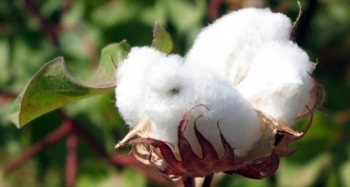Cotton
 Cotton has been grown in our area since the days of Plantations in the colonial period with slave labor until it was abolished in 1865. After this date plantations were operated primarily by share croppers who worked for a share of the crop for their existence. This too changed since World War 11 (1939-1945) when machines and skilled workers were used instead of mule power and hand labor.
Cotton has been grown in our area since the days of Plantations in the colonial period with slave labor until it was abolished in 1865. After this date plantations were operated primarily by share croppers who worked for a share of the crop for their existence. This too changed since World War 11 (1939-1945) when machines and skilled workers were used instead of mule power and hand labor.
Cotton is grown as an annual plant meaning it is a plant that grows and dies within one growing season. It requires a warm to hot climate and a growing season that has at least 200 days without temperatures dropping below freezing. Cottonseeds are planted in the spring Seedlings emerge from the soil about a week after plant Planting. Approximately three weeks later flower buds begin to emerge and continue for a couple of months. Flowers appear, but then dry and fall off. After the petals fall off the seedpod develops into a boll. The seedpod matures into a green, walnut sized boll in about eight weeks. The boll then dries and splits open to expose the fiber and seeds for harvest. Defoliants are used to cause the leaves to fall off the plants to provide a cleaner harvest. A cotton picker is used to remove the seed cotton and is loaded into large trailers and taken immediately to the gin. The cotton gin separates the fibers from the seeds, dries and cleans the fibers, and then bales the cotton.
All part of the cotton plant is useful; however, the fiber is the most important part. The cotton fibers are used primarily to make clothing because it is extremely durable and the clothing feels cooler in summer and warmer in winter because it moves moisture away from the wearer’s skin. Manufactures use the linters from cottonseeds as raw material for rayon, paper, and photographic film. They are also used to stuff mattresses, cushions, and pads. Bleached sterilized linters are used to make medical cotton pads. Cottonseed oil is a main ingredient of salad dressings and margarine. Unrefined cottonseed oil is used to make soap, cosmetics, and drugs. Cottonseed meal remains after all oil is extracted and feeds livestock and is used for plant fertilizer. The hulls are also used to make plastics and synthetic rubber.
Was this more than you ever wanted to know about cotton?

Cobb Gin
